Emergency Radio Communication Enhancement Systems (ERCES)
& Bi-Direction Amplifiers (BDA)
What is an ERCES (Emergency Radio Communication Enhancement System)?
ERCES (BDAs) ensure that a building can pick up radio signals throughout the entire area, including basements, stairwells, and all critical areas so first responders can properly communicate during emergencies.
The signal levels must be taken and recorded by an FCC licensed and factory certified individual in specified zone-sizes for each floor and must be documented and submitted to the AHJ for approval.
A radio frequency (RF) signal strength survey can be performed by a licensed FCC GROL-certified technician where they will measure the downlink and uplink signal strengths through the building. Results will be sent to the local AHJ, and if the coverage does not meet IBC requirements, an FCC-GROL tech can work with you and the AHJ to design an approved BDA System.
What is a BDA (Bi-Directional Amplifier)?
Bi-directional amplifiers boost signals for two-way radios within a building. Because multiple agencies are supported, the local Authority Having Jurisdiction will work with the system designer to ensure full coverage through the building, oversee what frequencies are supported, and test the system to ensure compliance and effectiveness.
A BDA system works similarly to a distributed antenna system (DAS) which amplifies cell phone signals throughout a building, tunnel, or other structure, only it’s made for police, fire, and EMS radios and FirstNet’s dedicated public safety spectrum.
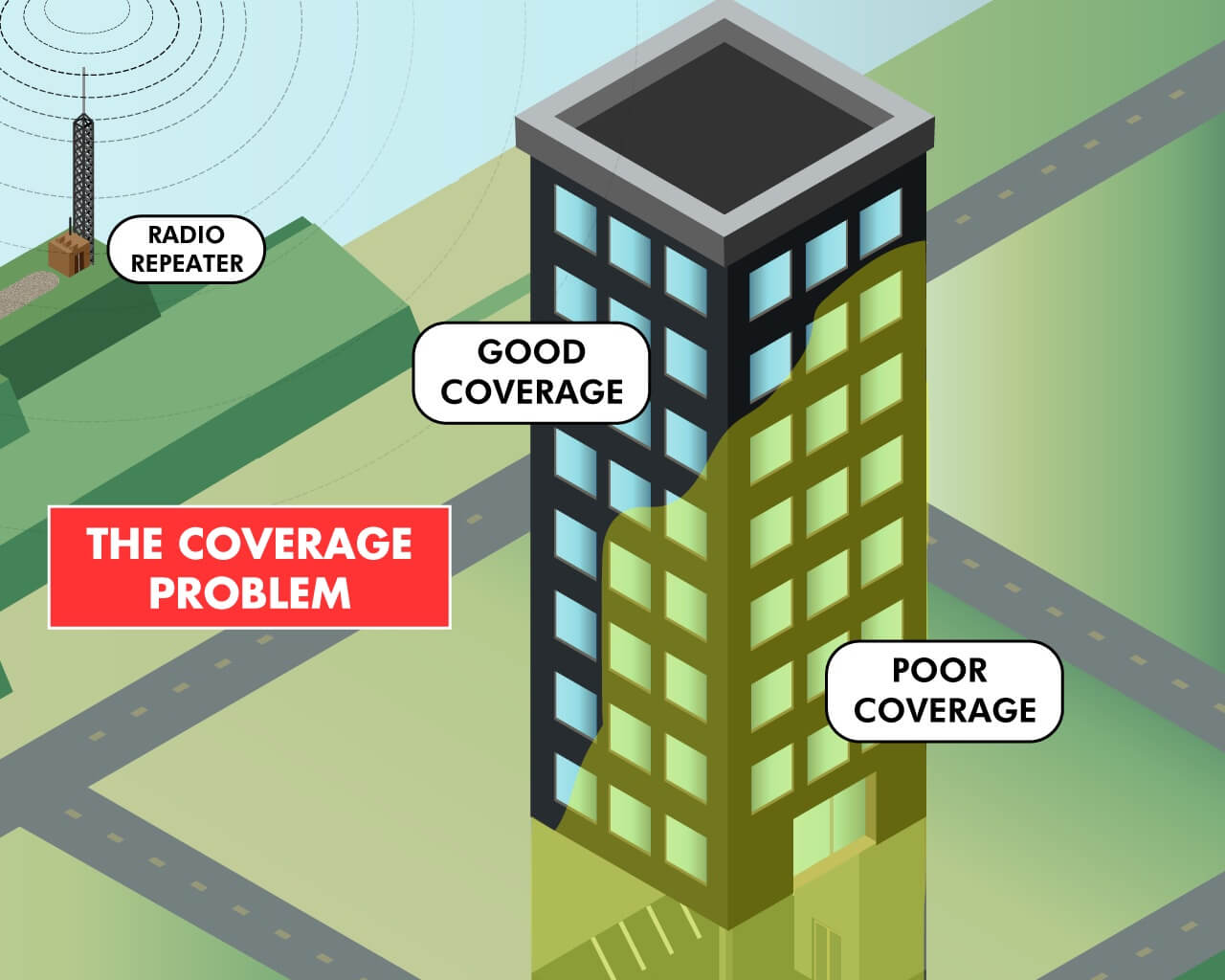
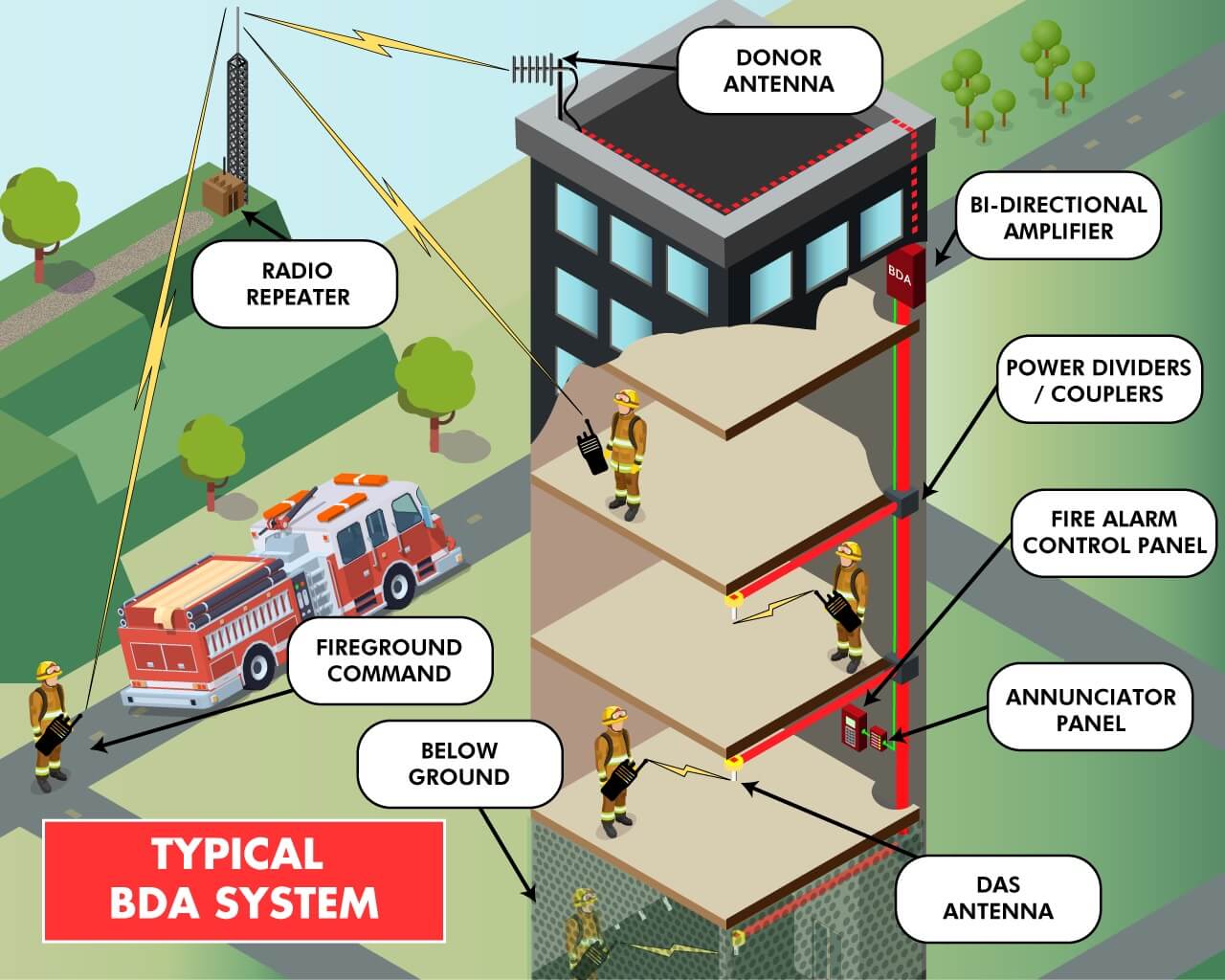
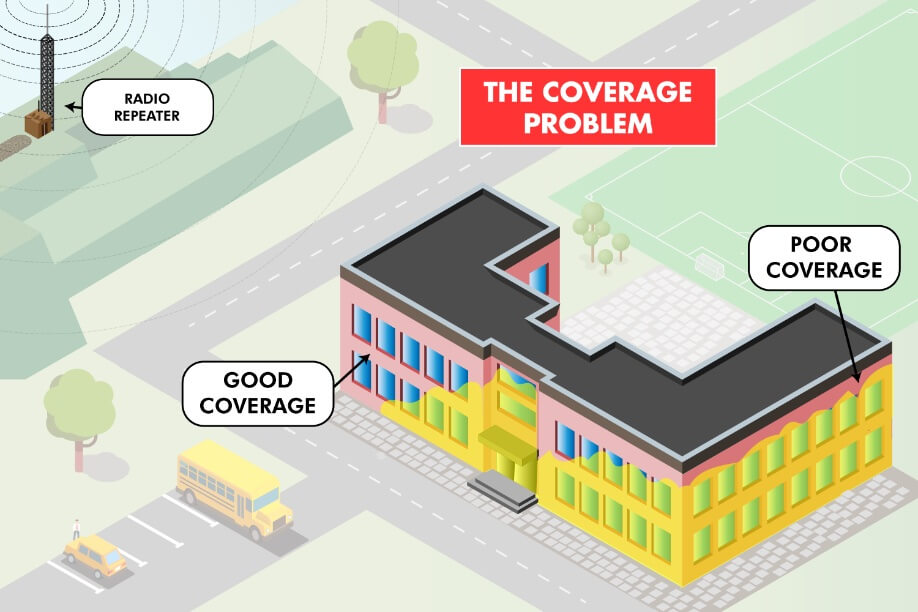
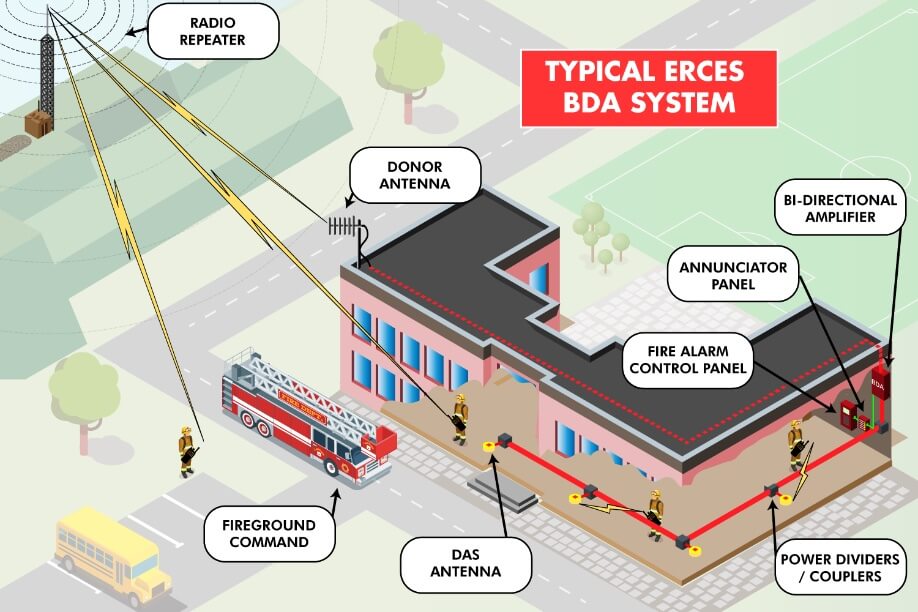
Do I Need This?
If you are working on a new construction, it’s essential for your designer to factor in ERCES codes. However, if you have concerns about the construction or are in an older building, you need to know for sure if there is adequate signal throughout the building or if you need to invest in a BDA system.
International Building Code (IBC) 2015 Section 916 and the International Fire Code (IFC) 2018 Section 510, National Fire Protection Association (NFPA) 72 2010, NFPA 1221 2016, and Underwriters Laboratories (UL) 2524, require all new buildings to be certified through a signal strength survey for radio coverage for emergency responders within the building and must meet a minimum signal strength level (-95 dBm) for Fire, Police, and EMS radio signal. Contingent upon agreement, Strat Security Systems will provide all these services.
Factors that affect antenna signal from reaching the entire building include:
- Concrete or metal construction
- Large buildings (generally 25,000 square feet or larger or buildings with multiple floors)
- Underground spaces, including basements and parking garages
- Low-E glass in the windows
For North Carolina, pursuant to Section 510 of the 2018 N.C. Fire Prevention Code, all new construction must now undergo a final signal strength study for Emergency Responder Radio Coverage.
If any floor fails meeting the minimum threshold for signal level, the building shall have an ERCES (BDA) system provided by Strat Security Systems installed. These systems are required to be reinspected annually, or if major renovations are done to the building.
What We Do

Bi-Directional Amplifier (BDA)
BDA Inside
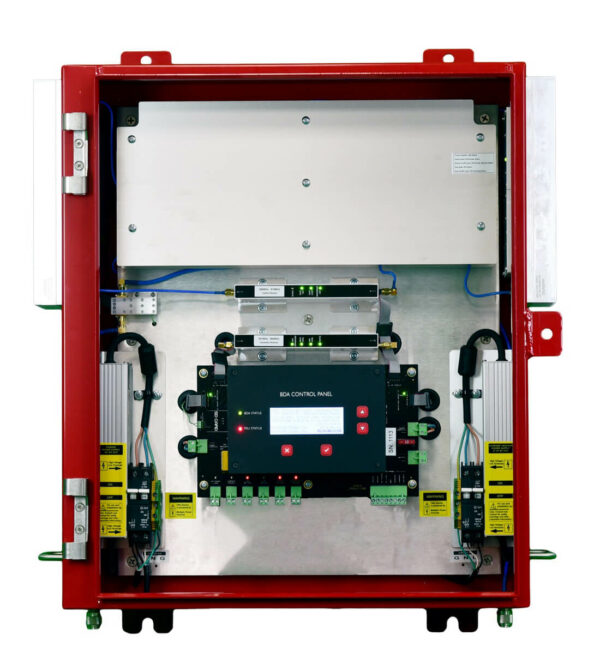
The BDA panel is the heart of your system. It is what receives, amplifies, and broadcasts radio signals – both incoming and outgoing!

Annunciator
Annunciator
The annunciator tells you what is happening with the BDA system. It monitors key parameters to keep your system in operational condition.

Interior Antenna
Interior Antenna
Antennas distributed throughout your building receive and broadcast signals from emergency responder radio systems.

Yagi Antenna
Yagi Antenna
The Yagi Antenna is placed above the roofline and is specially tuned to send and receive the appropriate signals. Its location and direction are determined by the closest radio tower to your site.

